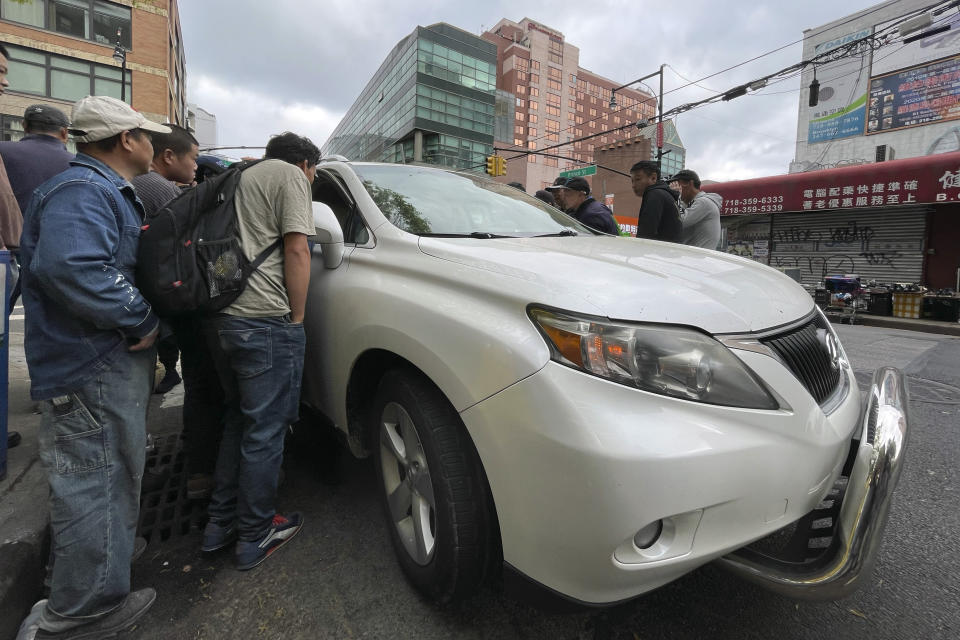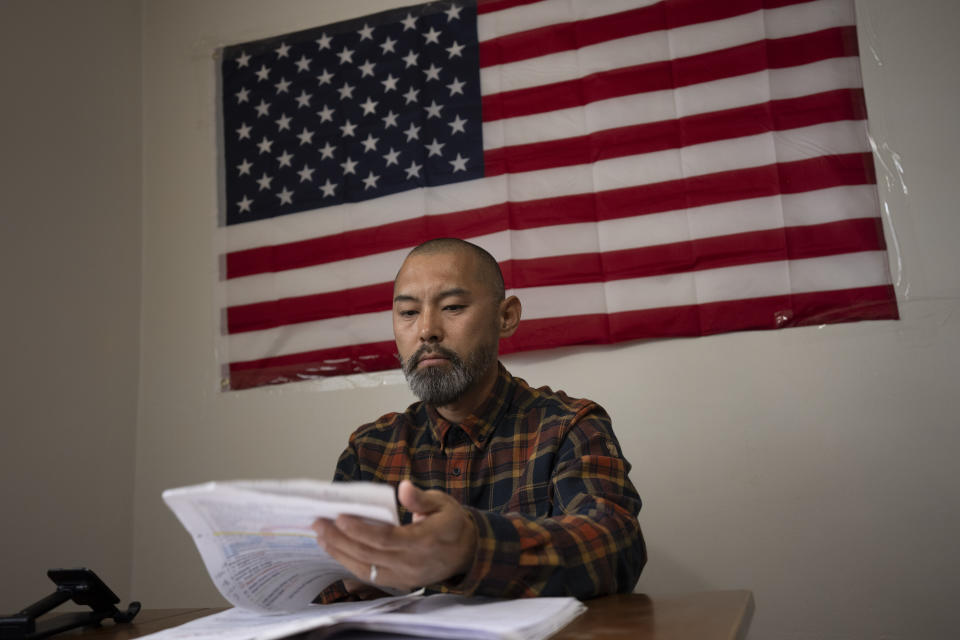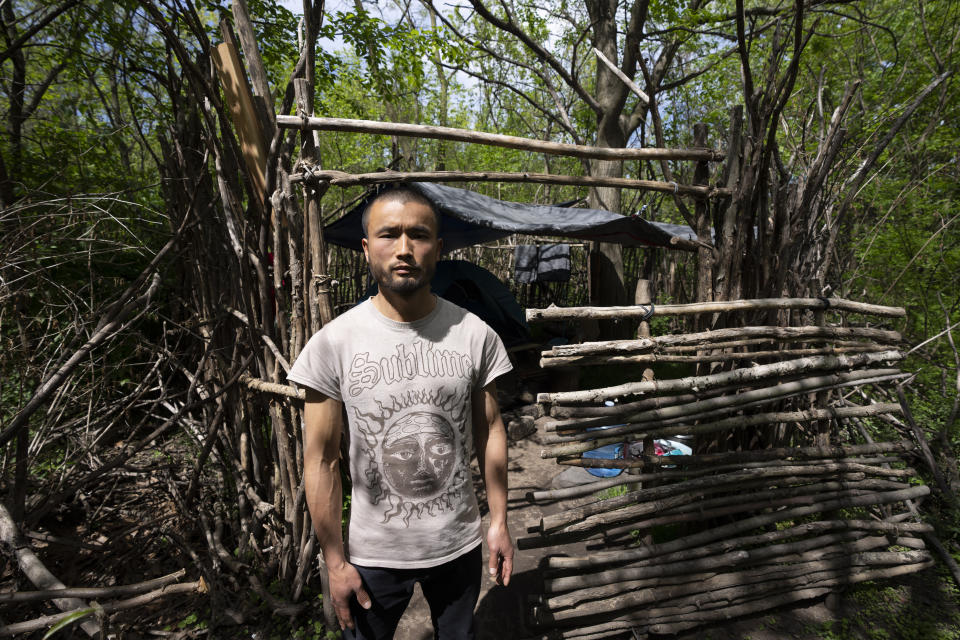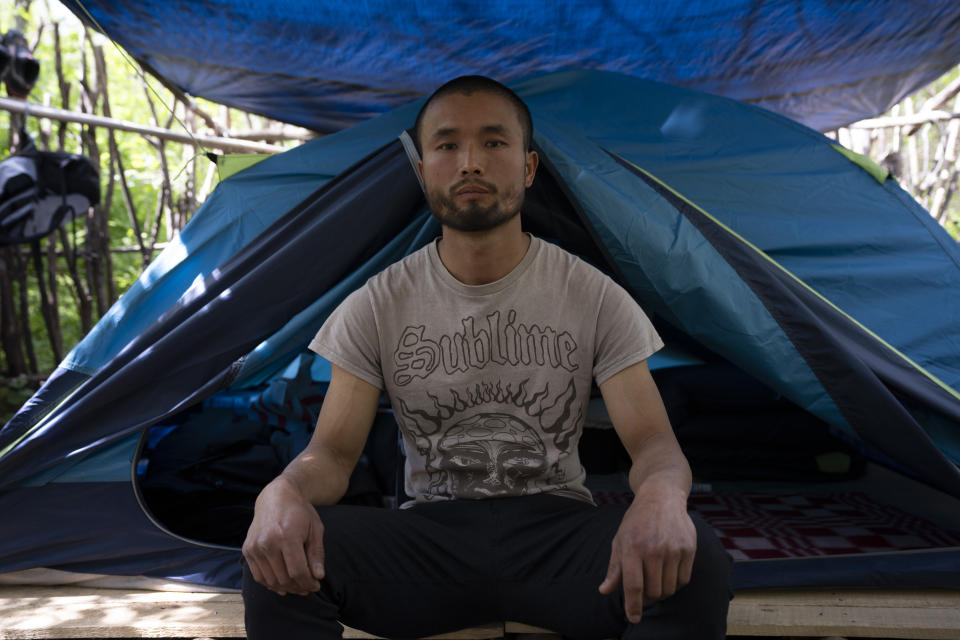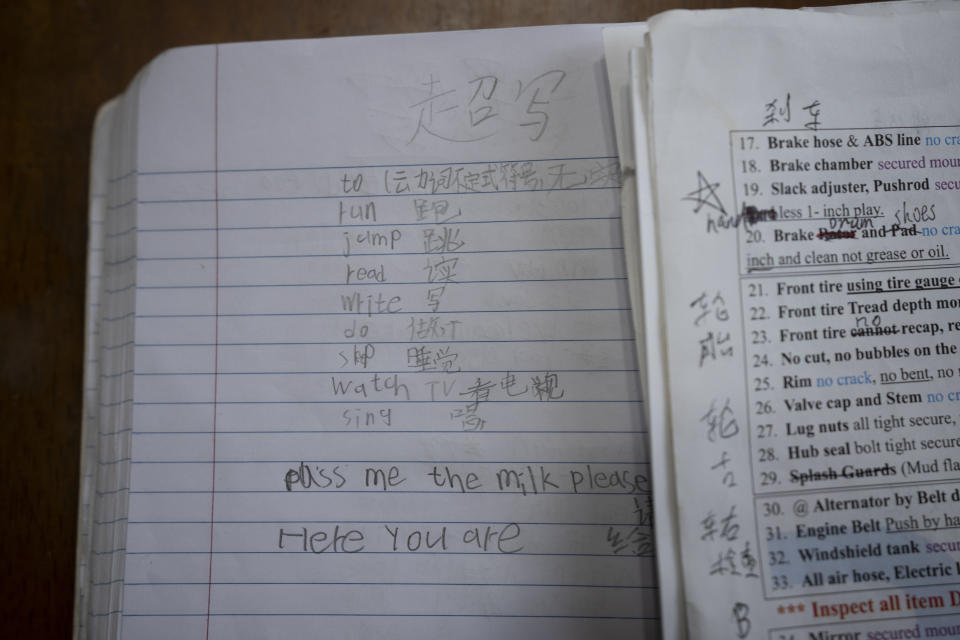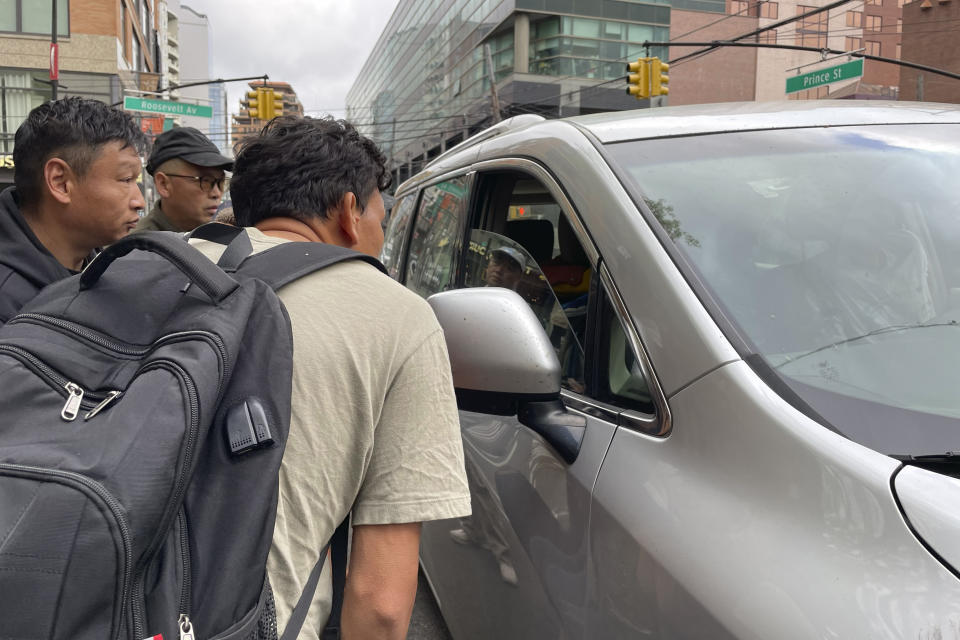Trump suggests Chinese migrants are in the US to build an 'army.' The migrants tell another story
- Oops!Something went wrong.Please try again later.
NEW YORK (AP) — It was 7 a.m. on a recent Friday when Wang Gang, a 36-year-old Chinese immigrant, jostled for a day job in New York City’s Flushing neighborhood.
When a potential employer pulled up near the street corner, Wang and dozens of other men swarmed around the car. They were hoping to be picked for work on a construction site, at a farm, as a mover — anything that would pay.
Wang had no luck, even as he waited for two more hours. It would be another day without a job since he crossed the southern U.S. border illegally in February.
The daily struggle of Chinese immigrants in Flushing is a far cry from the picture former President Donald Trump and other Republicans have sought to paint of them as a coordinated group of “military-age” men who have come to the United States to build an “army” and attack America.
Since the start of the year, as the Chinese newcomers adjust to life in the U.S., Trump has alluded to “fighting age” or “military age” Chinese men at least six times and suggested at least twice that they were forming a migrant “army." The talking point also appears in conservative media and on social platforms.
“They’re coming in from China — 31, 32,000 over the last few months — and they’re all military age and they mostly are men,” Trump said during a campaign rally last month. “And it sounds like to me, are they trying to build a little army in our country?"
Asian advocacy organizations say they worry the rhetoric could encourage further harassment and violence toward the Asian community, which saw more hate incidents during the COVID-19 pandemic.
Wang, who traveled several weeks from Wuhan, China, to Ecuador, to the southern U.S. border, said the idea that Chinese migrants were building a military “does not exist” among immigrants he has met.
“We came here to make money," he said.
Immigrants in Flushing said they came to escape poverty and financial losses from China’s strict lockdown during the pandemic, or to escape the threat of imprisonment in a repressive society where they couldn’t speak or exercise their religion freely.
Since late 2022 — when China’s three-year COVID-19 lockdown began to lift — the U.S. has seen a sharp rise in the number of Chinese migrants. In 2023, U.S. authorities arrested more than 37,000 Chinese nationals at the U.S.-Mexico border, more than 10 times the previous year’s number. In December alone, border officials arrested 5,951 Chinese nationals on the southern border, a record monthly high, before the number trended down during the first three months of this year.
Most who have come are single adults, according to federal data. There are more men than women on the perilous route, which typically involves flying to South America and then making the long, arduous trek north to the U.S. border.
One reason men may come alone in higher numbers is the danger, said a 35-year-old Chinese man who only gave his family name of Yin because he was concerned about the safety of his wife and children, who remain in China for now.
“This trip is deadly. People die. The trip isn’t suitable for women — it’s not suitable for anyone,” said Yin.
Immigrants in Flushing said they came to America to escape China, not to fight on its behalf.
Thirty-six-year-old Chen Wang, from southeastern China, said he decided to come to the U.S. in late 2021 after he posted comments critical of the ruling party on Twitter. He was admonished by local police and feared that he could be imprisoned.
More than two years later, he is still unemployed and lives in a tent in the woods that he has made into a home. Chen described his fellow Chinese on the journey as simply people “chasing a better life.”
To be sure, U.S. intelligence leaders have grave concerns about the threat China’s authoritarian government poses to the country. There also have been crimes committed by Chinese immigrants, including the arrest in March of a Chinese national breaching a military base in California, but there has been no evidence that migrants from China are coming to the U.S. to fight Americans.
Deputy Secretary of State Kurt Campbell last month called the Chinese nationals “economic migrants.”
China has said it strongly opposes illegal immigration. Its foreign ministry said Trump’s claims of a Chinese migrant army were “an egregious mismatch of the facts.” The Department of Homeland Security didn’t respond to requests for comment.
Steven Cheung, communications director for the Trump campaign, said letting so many Chinese migrants into the U.S. sets a “dangerous precedent" that nefarious actors could exploit.
“These individuals have not been vetted or screened, and we have no idea who they are affiliated with or what their intention is,” he said in an emailed statement.
Sapna Cheryan, a psychology professor at the University of Washington, said the claims about Chinese migrants — made without evidence — build on pervasive stereotypes that Asian people do not belong in the country.
These ideas have fueled violence against Asian Americans and could embolden people again, she said.
Li Kai, also known as Khaled, a 44-year-old Muslim from a city close to Beijing, said he was worried about Trump’s statements regarding illegal immigration and Muslims, but said he has no choice other than to stay.
He was one of the few who made the trip with his family. He shares a bunk bed and sofa with his wife and two sons in a temporary home in Flushing where he has placed an American flag on the wall.
When his sons are at school, he studies for a commercial driver’s license. He hopes to find a job and start paying taxes.
“Now that I have brought my family here, I want to have a stable life here,” he said. “I would like to pay back.”
___
Tang reported from Washington.
___
The Associated Press receives support from several private foundations to enhance its explanatory coverage of elections and democracy. See more about AP’s democracy initiative here. The AP is solely responsible for all content.
